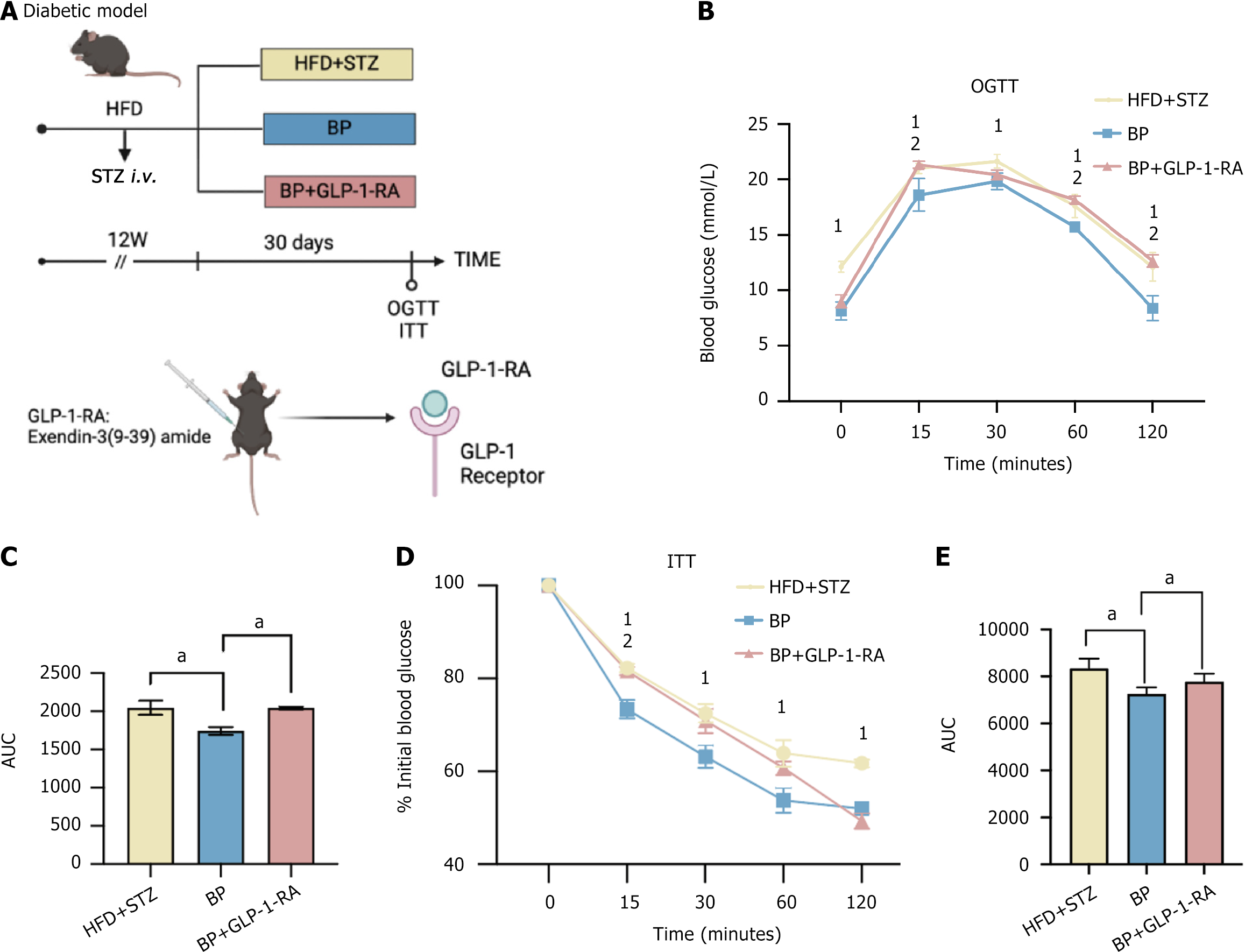Copyright
©The Author(s) 2025.
World J Diabetes. Jun 15, 2025; 16(6): 103616
Published online Jun 15, 2025. doi: 10.4239/wjd.v16.i6.103616
Published online Jun 15, 2025. doi: 10.4239/wjd.v16.i6.103616
Figure 2 Bile powder alleviated hyperglycemia through glucagon-like peptide-1 signaling.
A: Schematic diagram. Mice were fed a high-fat diet (HFD) for 6 weeks and were injected with streptozotocin (STZ) (50 mg/kg, intravenous) to induce blood glucose disorder. The HFD was continued for an additional 6 weeks. The mice were randomly divided into three groups (n = 5 per group): The HFD + STZ group; the bile powder (BP) group (75 mg/kg/day BP, intragastric gavage); and the BP + glucagon-like peptide-1 receptor agonist group [75 mg/kg/day BP, intragastric gavage + 25 nmol/kg/day glucagon-like peptide-1 receptor antagonist, exendin-3 (3-39) amide, intraperitoneal]. The oral glucose tolerance test (OGTT) and insulin tolerance test (ITT) were performed after the 30-day treatment; B: OGTT; C: Area under the curve (AUC) of the OGTT after the 30-day treatment; D: ITT; E: AUC of the ITT after the 30-day treatment. Data are shown as mean ± SEM. P < 0.05 compared between groups. Statistical analysis was performed using the Student’s t-test. aP < 0.05. 1High-fat diet-streptozotocin vs bile powder. 2Bile powder vs bile powder + glucagon-like peptide-1 receptor antagonist. HFD: High-fat diet; STZ: Streptozotocin; BP: Bile powder; OGTT: Oral glucose tolerance test; ITT: Insulin tolerance test; AUC: Area under the curve; GLP-1: Glucagon-like peptide-1; GLP1-RA: Glucagon-like peptide-1 receptor antagonist.
- Citation: Sun YM, Kuang JL, Zhang HH, Xia XX, Wang JY, Zheng D, Zhou KJ, Tang YJ, Zhao AH, Jia W, Xie GX, Zheng XJ. Pig bile powder maintains blood glucose homeostasis by promoting glucagon-like peptide-1 secretion via inhibiting farnesoid X receptor. World J Diabetes 2025; 16(6): 103616
- URL: https://www.wjgnet.com/1948-9358/full/v16/i6/103616.htm
- DOI: https://dx.doi.org/10.4239/wjd.v16.i6.103616









